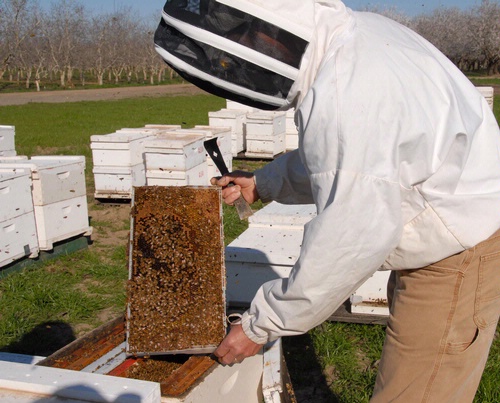Beekeepers
People who "keep" honeybees take care of bees and make sure that everything is going right inside of the hive. When a beekeeper looks inside of a beehive, they look to make sure that the honeybees are healthy, the queen is laying eggs, and that the honeybees are making honey. There are beekeepers with just a few beehives in their backyard; others are commercial beekeepers- they might have hundreds or thousands of beehives. These individuals may take their hives around the United States to pollinate different crops like Almonds, Blueberries, and Cucumbers. Some of them specialize in selling honey to people like you and me!
If you are interested in starting beekeeping, you don't have to wait till you're an adult! I (Lisa) started beekeeping when I was twelve years old! Amy, the Honey Princess, started when she was eighteen. Read some books and get involved with your local or state beekeeping group. They'll probably have beekeepers that will help you get started.
Entomologist/Bee Research Scientist
Entomologists study insects. There are entomologists that study honeybees; they might look at honeybee bodies, investigate honeybee diseases, and teach the beekeepers new things. Entomologists go to college- they probably spent more than four years studying insects. Sometimes they spend time in a laboratory; at others, they might be working with beehives.
Meet Dr. Marla Spivak, a Bee Research Scientist in Minnesota. She won a prize about her bee research this year!
At Pennsylvania State University, scientists are trying to figure out the causes of "Colony Collapse Disorder". They even created a Center for Pollinator Research. Here's what they have to say!
Bee Removal Expert
 |
| Uh-oh! While it is interesting to see how the honeybees build their homes, you would NOT want bees here! |
There are many other jobs related to beekeeping! Start learning more today by getting involved with a 4-H program, reading great beekeeping books, or searching the Web. Find out more about things you can do now at the Help the Bees page.
"Bee in the Know": There are about 200,000 beekeepers in the United States!













